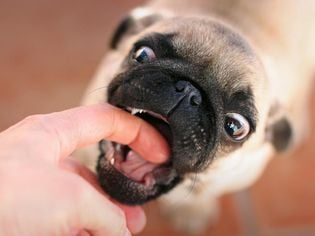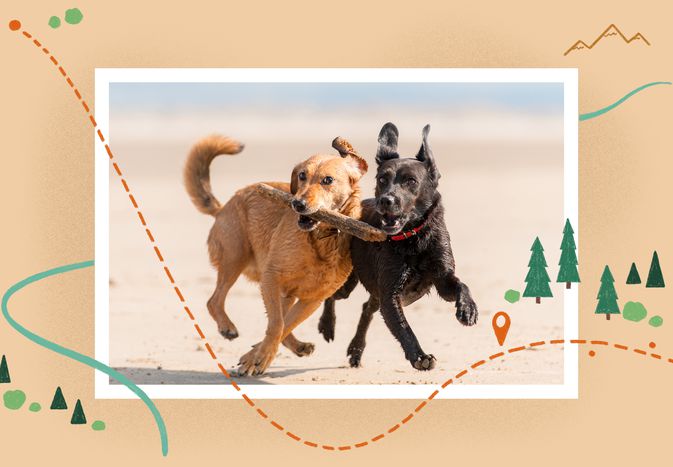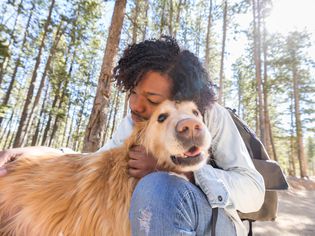Any dog can bite. According to the Centers for Disease Control, dogs bite around 4.5 million people each year. This number may seem frightening, but there are a number of things you can do to ensure that your dog doesn't contribute to this dog bite statistic.
When a dog bites a person, it is often out of fear or protectiveness, or when they aren't feeling well and want to be left alone. Training to prevent dog bites involves proper socialization, providing structure, and building your dog's confidence.
Socialize Your Dog
If you've just brought home a puppy, the best thing you can do is introduce it to as many new places, people, and situations as possible. Keep things positive. This early exposure is referred to as socialization. A well-socialized puppy is far less likely to be fearful in new situations, and this lack of fear decreases the likelihood of aggression. If your dog is no longer a puppy, you can still work on adult socialization.
Spay or Neuter Your Dog
While having your dog spayed or neutered does not guarantee it'll never bite, there is some evidence that suggests that altered dogs tend to be less aggressive. There are a number of good reasons to spay or neuter your dog, and potentially preventing a dog bite is at the top of that list.
Don't Make Assumptions
Given the right circumstances, any dog has the potential to bite. Too often people are bitten by dogs because they assume their dog won't bite. Don't assume that because a dog is a certain breed or size, or because it has never shown aggression in the past, a dog won't bite.
Work on Obedience Training
An obedient dog is easier to control. By working on obedience training, you can use basic commands to keep your dog focused on you in situations in which it is uncomfortable. If you are able to control your dog's behavior, it is less likely to bite. In addition, training provides structure for your dog and boosts its confidence.
Use Positive Reinforcement
Positive reinforcement dog training is a method of training that rewards good behavior rather than punishing inappropriate behavior. Positive reinforcement can include treats, extra play time, verbal encouragement, petting, or any other activity your dog enjoys.
Punishment, by contrast, can be anything a dog finds unpleasant. Some common punishments include hitting, leash corrections, and physically rolling a dog over, a process referred to as alpha rolling.
Research has found that dogs who are trained using punishment are 25% more likely to respond with aggression than other dogs. By using positive dog training methods, you can reduce the likelihood of your dog biting.
Be Aware of Body Language
Dogs use body language to communicate. Pay attention to what your dog's body language is telling you. A dog who is afraid or unhappy about having its territory invaded has the potential to bite. Behaviors such as bared teeth, raised hackles, a lowered head, or ears lying flat against the head are signs that a dog is uncomfortable and may bite. If you notice a dog displaying this type of body language, give it some space and advise others to do so as well. Remove your dog from the situation as soon as you feel safe to do so.
Don't Stop a Dog's Growls
Your dog growls to let you know it is uncomfortable with a person or situation. It is a warning signal that it may bite. Very often our impulse is to teach our dogs it is inappropriate to growl. The dog may learn this lesson so well that it stops growling in any situation. This is why we so often hear stories of dogs biting without warning. By preventing them from growling, we don't allow dogs to communicate their discomfort.
A better option is to pay attention to the circumstances that cause your dog to growl. Is it growling at someone approaching its food bowl, a child running past, a person cornering it? Once you know why your dog is growling, you can begin a dog training program to teach your dog to become more comfortable in those situations. In this way, you correct the problem that causes potential aggression rather than taking away your dog's ability to warn you it may bite. Once your dog is more comfortable in a given situation, it won't feel the need to growl.
Problems and Proofing Behavior
To proof your dog's new, more appropriate behavior you'll need to take the dog into new environments and introduce it to new people and animals. If it's able to maintain its behavior in a variety of settings, it has internalized the training; if not, you may need to take additional steps.
If you know when your dog is most likely to growl or bite, you'll want to be sure that the dog can now handle that situation without resorting to aggression. It's not a good idea to startle or frighten your dog, but it is helpful to slowly introduce challenges to be sure your dog can handle them. For example, if your dog is aggressive around food but has learned not to growl or bite at mealtime, have another person bring the dog's food to be sure that the new behavior is followed even with a new person in the room.
If you've taught commands using positive reinforcement and worked hard to earn your dog's trust, you may still find that your dog is having a tough time learning not to growl or bite. If that's the case, you'll need to take additional steps.
Aggression is a tough behavior problem to overcome on your own. If you believe your dog may become aggressive, or if it has bitten someone already, it's time to call in a professional dog trainer or animal behaviorist. A professional dog trainer can help you come up with a plan to manage your dog's aggression to ensure the safety of both you and your dog.










Comments on " How to Train Your Dog Not to Bite" :